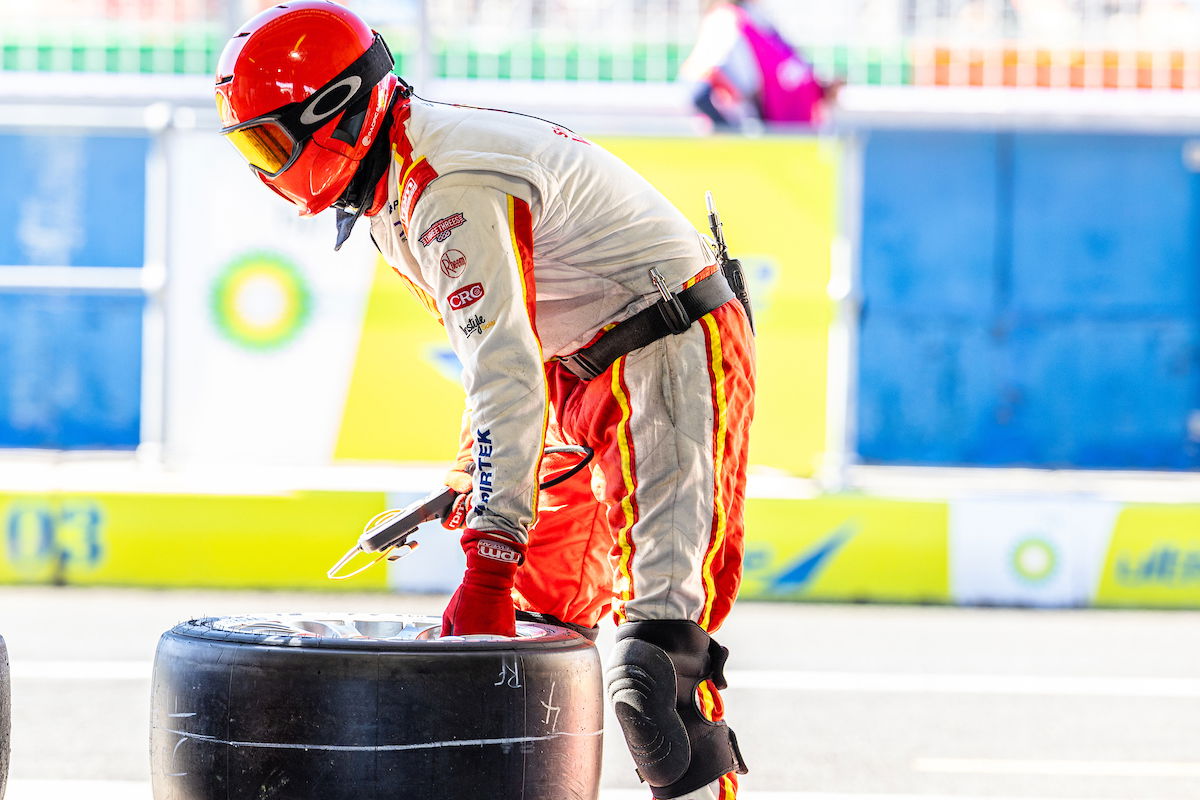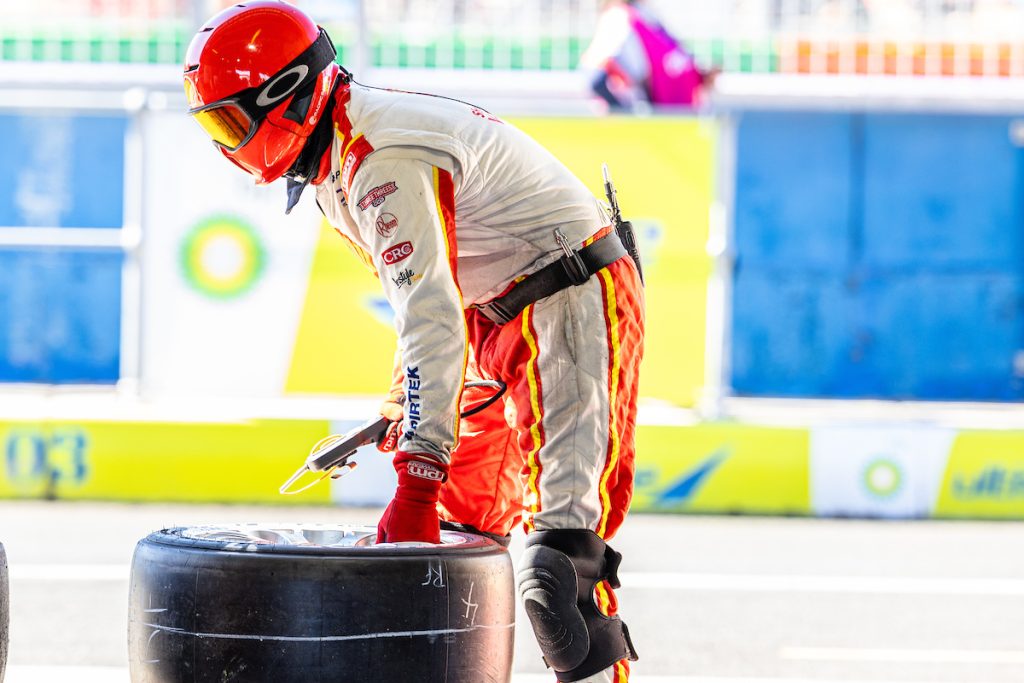

The hardest compound in the Dunlop range had only ever been used at Mount Panorama until last year’s Bathurst 1000.
Then, Supercars elected to use the soft compound, a change enabled by the fact that the new-for-2023 Gen3 race cars generated lower corner loads than their predecessors due to downforce having been slashed.
However, with larger fuel cells also, stint lengths were instead governed by the rubber on the cars, and hence tyre conservation became the overwhelming objective.
That made drivers loathe to push hard, as did the extent of the ‘marbles’ which built up off the racing line, and a dull race ensued.
Reverting to the hard compound would lessen those issues and presumably the hope is that a more exciting contest will unfold.
READ MORE: Roland’s View: The Bathurst 1000 is tyred
What the change for Event 1 means for Event 10, the Bathurst 1000, is unclear.
It is thought that the soft remains the chosen compound for this year’s Great Race, but that there is scope to also change that event to the hard compound depending on how next month’s races at Mount Panorama play out.
Shane van Gisbergen and Richie Stanaway won the 2023 Bathurst 1000, although not without a scare for the former when a “football”-sized clump of rubber fell out of the splitter of his Camaro.
“They kept saying they were pulling footballs of rubber out of the splitter every pit stop,” he revealed, post-race.
“I had one – five laps to go – fall out at The Cutting and it fell under the right-rear tyre and I had a big slide. That wasn’t very nice.”
As yet, finer details of the 2024 Bathurst 500 format are not known.
There will be two, 40-lap/250km races and refuelling is necessary, although the compulsory pit stop requirement is unknown.
An aggregate fuel drop across two pit stops was the norm for refuelling races in 2023 (and years prior), but not universal.
For the 200km race at Sydney Motorsport Park, teams were left with the option of sinking 80 litres into a car in just the one pit stop, and CPSs were dropped altogether for the enduros.
At Mount Panorama, 125km (just under 21 laps) is nowadays back to being comfortably within fuel range, and hence a one-stopper at next month’s event is feasible if the sporting regulations allow.
How far teams stretched fuel load at last year’s Bathurst 1000 goes some way to demonstrating the effect of running the soft compound.
While the front-running outfits generally chose stint lengths in the mid-twenties in terms of a lap count, cars sometimes went 30 or more at a time without pitting, even during the 88 laps of green flag racing to the finish.
Both the Camaro and Mustang are expected to generate more downforce this year than they did at Mount Panorama last year, following off-season wind tunnel testing undertaken in a bid to ensure aerodynamic parity between the two cars.
The magnitude of the uplift is not known but it is not expected to be particularly large, and hence would not lead to a substantial increase in corner loads or fuel consumption.
The Bathurst 500 takes place on February 23-25.




















Discussion about this post